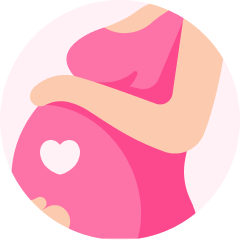The article below provides a brief explanation on the definition as well as the treatment of haemorrhoids and varicose veins. The two conditions are not uncommon, and many are afflicted by them or have family members suffering from these conditions.

What Are Haemorrhoids (Buasir)?
Haemorrhoids are defined as the displacement of cushions of blood vessels lying underneath the lining of the anal wall. In normal conditions, these cushions contribute to continence and help with stool control. It is considered a disease when displacement of these cushions produces symptoms such as bleeding, pain or swelling. Haemorrhoids can be internal or external. Internal haemorrhoids occurs inside the body and the usual symptom is painless rectal bleeding. External haemorrhoids, as the name suggests, refers to the protrusion of haemorrhoids outside of the anusm which may cause pain and bleeding as well.
What Is the Treatment for Haemorrhoids?
The treatment for haemorrhoids can be divided into three large groups: non-pharmacological treatment, pharmacological treatment, and surgical-related treatment. The choice of treatment depends on the grading of the haemorrhoid and the preference of the patients.
Non-pharmacological treatment includes lifestyle and dietary changes such as increasing fluid intake, eating more fibers, exercising regularly and avoiding strain.
Pharmacological treatment involves the use of medication such as Micronized Purified Flavonoid Fraction (MPFF), steroid cream, anti-hemorrhoidal creams, suppositories and painkillers (either in the form of oral tablets or topical cream).
Surgical-related treatments are used when treatment failed through pharmacological and non-pharmacological treatment. Simple surgical-related procedures include the use of rubber band ligation (the most commonly performed procedure), sclerotherapy, and infrared coagulation. Most patients will find improvement of symptoms from these procedures. For the small percentage of patients who fail to find relief from these procedures, surgical operations are carried out. These include the removal of the haemorrhoid (Haemorrhoidectomy), stapling the internal hemorrhoid tissues to the rectal wall (Stapled haemorrhoidopexy) and tying up of the blood vessels of the haemorrhoid (Haemorrhoidal Artery Ligation).

What Are Varicose veins?
Varicose veins refer to the tortuous swelling or dilation of superficial veins (located beneath the skin), usually in the legs. They usually lead to symptoms of fullness or pain in the area. Varicose veins are more common in women compared to men. Causes can be lifestyle factors such as smoking, standing too long, acquired conditions such as aging, obesity and pregnancy, or hereditary conditions such as incompetency of the valves of the vein.
What Is the Treatment for Varicose Veins?
Treatment options for varicose veins include lifestyle modification, pharmacological treatment, compression therapy, sclerotherapy, ablative therapy and surgical procedure. Examples of lifestyle modification includes exercise, weight loss, elevating the leg, avoiding prolonged standing and smoking cessation. Pharmacological treatment can be through Micronized Purified Flavonoid Fraction (MPFF) or other medicines. Compression therapy includes the use of compression stockings. It is the most frequently prescribed treatment as it is the first step in varicose vein management. It is also effective for managing the discomfort and swelling. Sclerotherapy involve the use of sclerosant injection to shrink the vein.
Ablative therapy refers to the process of destroying diseases or abnormal tissue by means of heat, chemicals or radiation. Laser ablation of varicose veins can be done both in two ways; endovenous ablation (using ultrasound) or laser ablation.
Hello Health Group does not provide medical advice, diagnosis or treatment.
You might also want to read:
[embed-health-tool-bmi]


















